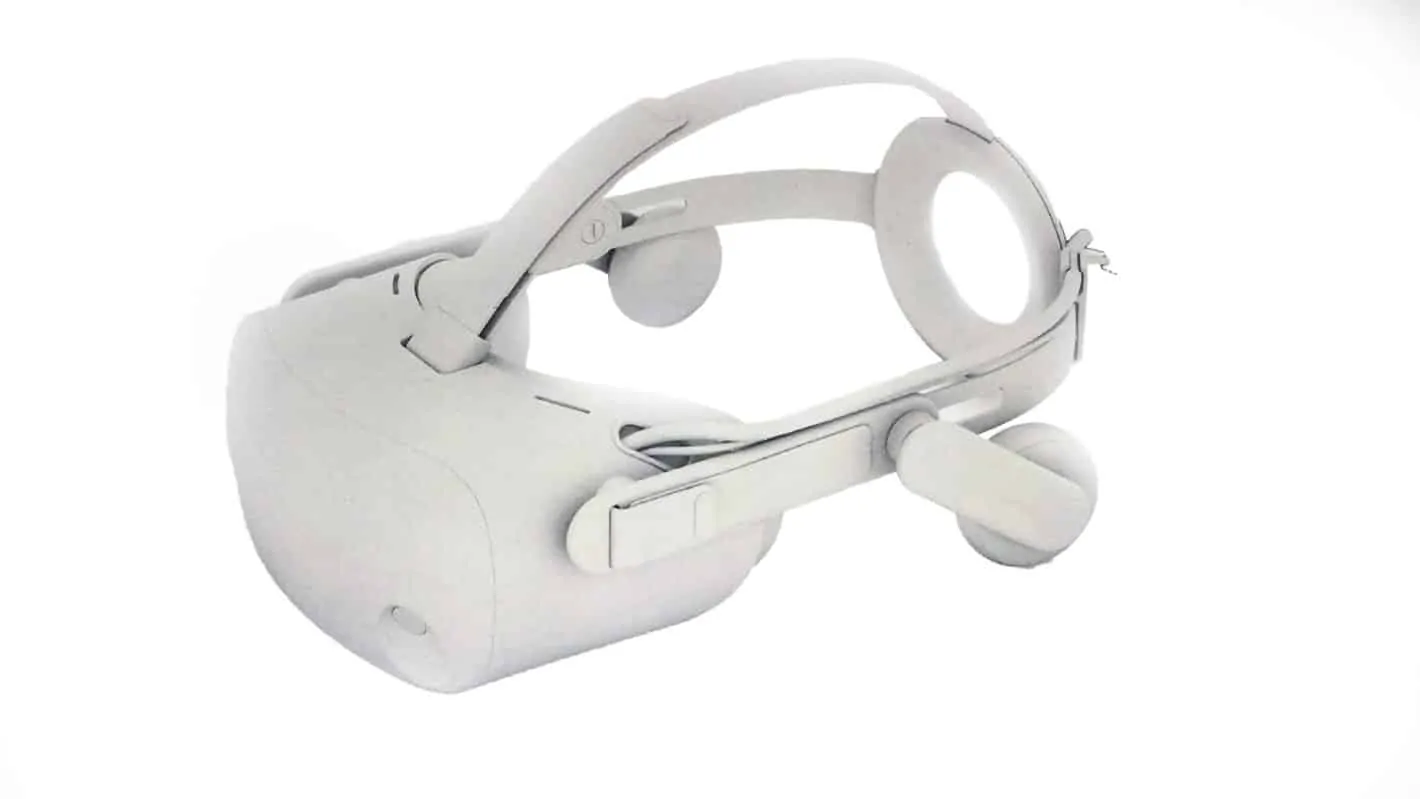HP has a new mixed reality headset that it’s internally calling “Copper” on the way, and it has a higher resolution than any headset currently on the market.
To be specific, Copper’s resolution is now being confirmed as 2,160 by 2,160 per eye. This incredibly high resolution makes things so clear that Road To VR who got to check out the headset claimed to barely notice VR’s infamous ‘screen door effect’, a sort of micro-pixellation that results from the user’s eyes being so close to the display.
The super high resolution isn’t all that Copper has going for it as HP also designed the new headset with comfort in mind, making it as lightweight and ergonomic as possible. Though the attached picture is only an untextured render, it gives a good idea of what the final product may feel like on your head. The circular strap joining point on the back will better mold to the backs of users’ heads, and the design of the actual headset up front is compact, and presumably lightweight.
HP put out a mixed reality headset for Windows back in 2017, as did many other companies. This headset was largely unremarkable among its kind, but was considered serviceable and garnered good reviews. For its sequel, HP went directly to its main target market, being enterprise users, for feedback.
According to HP, the feedback it received centered on providing a new headset with far higher resolution, enabling users to see fine details and work better with items that may be smaller, or further away in the digital space. Users of the first headset added improved comfort to the feedback as an afterthought of sorts. With these two core concepts in hand, HP set out to create what is now known as Copper. The headset is reportedly in the final stages of prototyping, and is almost ready for commercial production.
This is an all-inclusive mixed reality headset that’s comfortable and boasts a resolution so high that most users should have no problem using it for all sorts of work, along with more casual use cases. The obvious implication here is that the time may finally be ripe for the VR desktop to go mainstream, at least in the enterprise markets that currently use VR and mixed reality headsets in some capacity.
That’s not to say that VR desktops aren’t already a thing; anybody with a Cardboard-enabled headset, a modern smartphone, and a half-decent PC can get one via SteamVR, or by simply beaming their desktop through a program like RiftCat or TrinusVR. There are even numerous Android apps made specifically for this purpose.
The problem with current VR desktop setups is, to put it bluntly, quality. Image quality in VR, like in any other medium, is based on resolution. While you could do some work with things scaled up and using large fonts with current VR desktops, HP wants to push things to a new level. Although Copper now seems certain to be on the way, there’s still currently no word on price.

